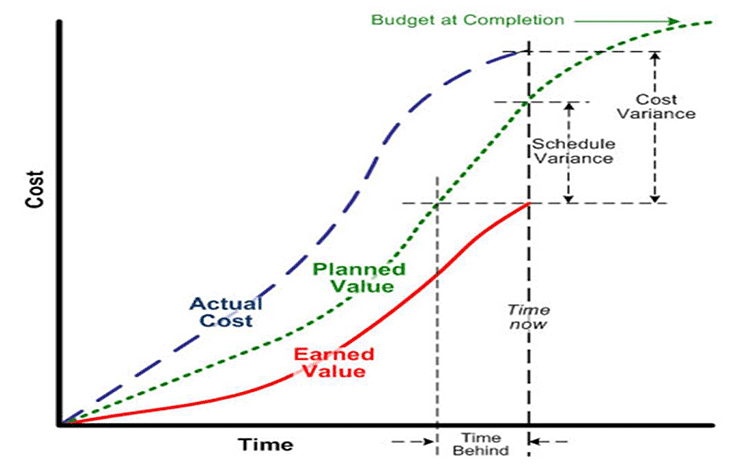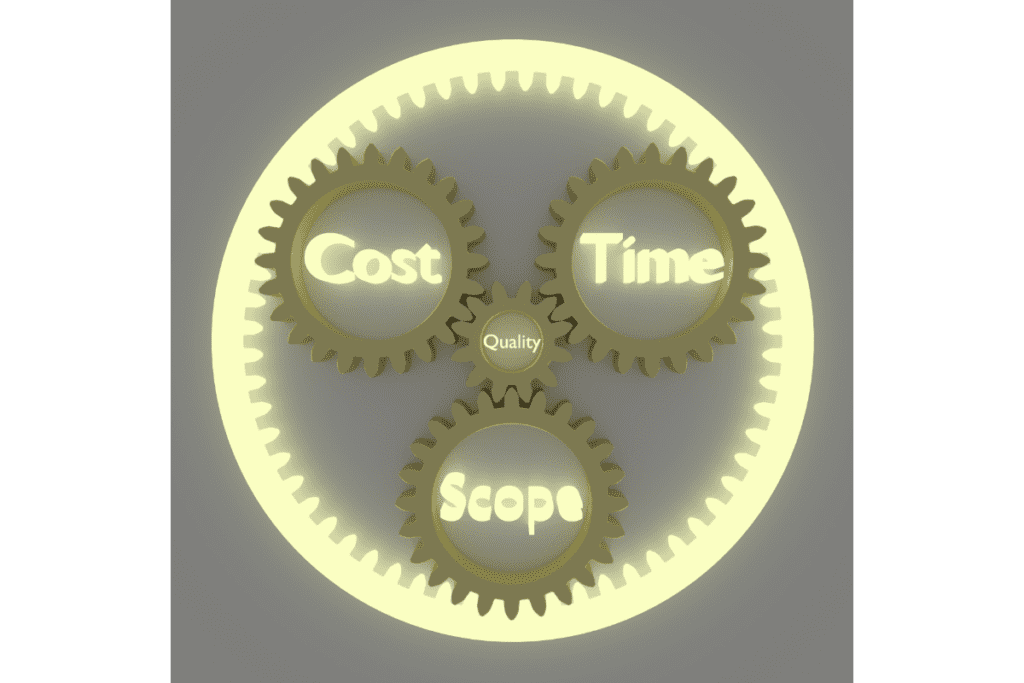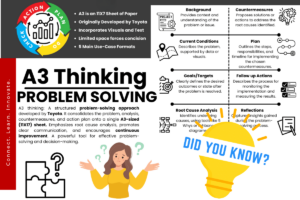Project Managers as Stakeholders on Agile Teams Without Wagile or Agilefall
A Symphony of Leadership and Collaboration
Project managers have historically played a crucial role in the dynamic world of project management. They are the conductors who orchestrate the various elements of a project, ensuring harmony and synchronization among team members.
As stakeholders on agile teams, project managers can bring a unique perspective that encompasses both the overarching objectives and the intricate details required for success. In this article, we will delve into the role of project managers as stakeholders in an agile environment.
We will explore how focus on the triple constraint to achieve remarkable outcomes, without creating a Wagile hybrid is a value-add to everyone involved.
The Maestros of Project Management
Before diving into their role within agile teams, let’s define who project managers are and what they bring to the table. A project manager is an individual responsible for planning, executing, and delivering projects while ensuring adherence to timelines, budgets, and desired outcomes. They serve as catalysts for collaboration across multidisciplinary teams, coaxing out each team member’s best performance.
Agile methodology offers a refreshing approach to project management by prioritizing collaboration and flexibility. Unlike traditional waterfall methods that rely on rigid plans, agile embraces change and values iterative progress over extensive upfront planning.
An agile mindset fosters a culture that encourages open communication, adaptability, and continuous improvement throughout the development process. By leveraging this methodology’s tenets effectively, project managers can optimize their stakeholder role within an agile team.
The Triple Constraint in Project Management: Navigating Time, Cost, and Scope
Time: Delivering Projects within Specified Deadlines
To ensure the success of any project, it is vital to deliver it within the agreed-upon timeframe. The agile approach to time management understands that effective planning and execution are essential. Through iterative sprints, project managers can break down complex projects into smaller, manageable tasks.
This allows teams to work on specific deliverables within a set time frame. Agile teams implement techniques like timeboxing, where fixed durations are assigned for completing tasks or stages of development.
This encourages focus and prevents unnecessary delays. Additionally, sprint planning meetings provide an opportunity for the team to collaborate and define what can be achieved within a given sprint cycle.
Cost: Managing Budget Effectively while Meeting Objectives
The cost aspect of the triple constraint triangle emphasizes managing project expenses efficiently without compromising objectives. Agile methodologies prioritize continuous value delivery by focusing on high-priority features first.
This enables project managers to optimize costs by delivering essential functionalities early on. Techniques such as prioritization help determine which features should be developed first based on their business value.
Backlog grooming sessions allow the team to review and refine the product backlog regularly, ensuring that valuable items are at the top of the list. By applying lean principles that emphasize waste reduction and resource optimization, project managers can strike a balance between meeting objectives and managing costs effectively.
Scope: Balancing Requirements with Available Resources
Balancing project requirements with available resources is essential for project managers, and agile approaches like incremental development, user stories, and product backlog refinement aid in achieving this balance.
The scope aspect of the triple constraint triangle involves balancing project requirements with available resources throughout its lifecycle. Agile approaches acknowledge that projects evolve and requirements may change over time.
To accommodate this adaptability while maintaining control of the triple constraint, agile teams adopt an incremental development approach. Utilizing techniques like user stories enables clearer communication between stakeholders and developers about desired outcomes.
These user-centric narratives help define the scope and guide the team in prioritizing tasks. Product backlog refinement ensures that requirements are continuously reviewed and adjusted based on evolving priorities and feedback.
Understanding and effectively managing the triple constraint triangle is crucial for project managers on agile teams. By embracing iterative sprints, timeboxing, cost optimization techniques, adaptive scope management, and collaborative approaches like user stories and backlog refinement, project managers can navigate these constraints to ensure successful project delivery within specified deadlines, budgets, and scope.
The Role of Project Managers in Agile Teams
Shifting Responsibilities from Traditional Project Management Practices
The typical response is there is “no place” on an agile team for a project manager. In the realm of delivery management, the role of a project manager has undergone a significant transformation with the adoption of an agile mindset and the Scrum methodology.
Gone are the days of rigid command-and-control structures, where project managers acted as authoritative figures. Instead, agile methodologies encourage project managers to adopt a servant leadership style.
This approach emphasizes collaboration, empowerment, and enabling teams to make decisions collectively. As part of this shift in responsibilities, project managers now focus on facilitating communication between team members and stakeholders.
They act as conduits through which information flows seamlessly, ensuring that everyone is on the same page regarding project goals, progress, and potential roadblocks. By fostering open lines of communication, project managers help build trust among team members and encourage active collaboration.
There is room and lots of value to having these methodologies coexist in the same ‘sandbox’, without diluting either’s primary goal.
Maximizing Collaboration: The Synergy Between Project Managers and Scrum Masters in Agile Environments
Leveraging the Strengths of Project Management and Agile Methodologies
As part of this shift to evolve in a dynamically changing business landscape, organizations are increasingly adopting agile methodologies to enhance project delivery and drive innovation. The collaboration between project managers and scrum masters is a critical aspect of this approach. By combining the strengths of project management and agile principles, teams can achieve remarkable outcomes.
In this section, let’s dive deeper into how project managers and scrum masters work together to optimize project delivery and ensure alignment with the triple constraint.
Preserving the Agile Mindset: The Role of the Scrum Master
Championing Agile Principles
Imagine a scrum master as a dedicated facilitator and guardian of the agile mindset within the team. They play a pivotal role in fostering a collaborative work environment, promoting adaptability, and enabling continuous improvement. In other words, they ensure that the agile manifesto is alive and thriving throughout the project.
One of the scrum master’s core responsibilities is to guide the team in producing essential artifacts. These artifacts provide transparency and insights into the project’s progress. For example, sprint burndown and burnup charts visually represent the team’s progress and help identify potential roadblocks or areas for improvement. The scrum master ensures that all necessary agile ceremonies and processes, such as daily stand-ups and sprint retrospectives, are executed effectively.
Key Deliverables for the Scrum Master
To bring transparency and clarity to the project, the scrum master works closely with the product owner to maintain a well-sized backlog. This means ensuring that the backlog contains a sufficient number of user stories or tasks that the team can comfortably complete within a sprint.
The scrum master also collaborates with the product owner to generate backlog burndown or burnup charts. These charts provide valuable insights into the progress of the project, indicating how quickly the team is completing work and how much work remains. They enable stakeholders to visualize the project’s trajectory and make informed decisions based on the team’s performance.
Collaborating with Product Owners to Define Project Goals and Priorities
To keep the triple constraint structure intact – encompassing time, cost, and scope – it is crucial for project managers to collaborate closely with product owners.
Working hand in hand with product owners allows project managers to gain insights into business objectives and align them with team deliverables effectively. A vital aspect of this collaboration involves assisting in creating a clear product vision and roadmap.
Through their experience and expertise in managing projects, project managers play an instrumental role in translating high-level business requirements into actionable tasks for the development team. They ensure that all stakeholders have a shared understanding of what needs to be achieved throughout every stage of the project.
Ensuring Alignment Between Business Objectives and Team Deliverables
One of the critical responsibilities that falls upon project managers’ shoulders is ensuring alignment between approved business objectives and team deliverables while managing the triple constraint. By keeping a watchful eye on the project cost, time, and scope, project managers can make informed decisions that maintain balance and harmony in the project ecosystem.
To achieve this alignment, project managers employ various techniques such as scope management actions and ongoing risk assessment. They work closely with the team members working on the project to monitor progress, identify potential deviations or risks, and take proactive measures to keep the triangle intact.
By continuously monitoring and controlling the triple constraint, project managers help steer projects towards successful completion while meeting business objectives. As stakeholders on agile teams, project managers have evolved from traditional command-and-control figures to servant leaders who facilitate communication among team members and stakeholders.
Their collaboration with product owners helps define clear goals and priorities, ensuring alignment between business objectives and team deliverables. With their unwavering focus on managing the triple constraint of time, cost, and scope, project managers play a vital role in keeping projects on track for success in an agile environment.
The Role of the Project Manager
Navigating the Triple Constraint
Now, let’s shift our focus to the project manager—the orchestrator who ensures alignment with the triple constraint: time, cost, and scope. The project manager collaborates with the product owner, business stakeholders, and the scrum master to drive the project towards success.
Rather than directly managing the agile team, the project manager takes on the role of a stakeholder. Their primary responsibility is to oversee the project’s financial aspects, track budget variances, and ensure that the project stays on track to achieve its objectives.
Tracking the Triple Constraint with EVM
To effectively manage the project’s budget and provide stakeholders with comprehensive updates, the project manager employs earned value management (EVM) techniques. By integrating the burn-down and burn-up charts, along with the fully sized backlog, the project manager can monitor budget variances at regular intervals, such as at the end of each sprint.
EVM Graph: A Holistic View of Project Performance

Understand Earned Value Management (EVM), a technique that allows project managers to track and manage the triple constraint holistically. EVM integrates three key metrics: planned value (PV), earned value (EV), and actual cost (AC).
- Planned Value (PV): PV represents the authorized budget assigned to the work planned for a specific time period. It indicates the value of work that should have been completed at a given point in the project timeline.
- Earned Value (EV): EV measures the value of work that has actually been completed at a specific time. It reflects the progress and productivity of the team based on completed deliverables.
- Actual Cost (AC): AC represents the actual cost incurred in completing the work at a specific time. It includes labor costs, material expenses, and any other costs associated with project execution.
By comparing PV, EV, and AC, project managers can calculate key performance indicators (KPIs) such as schedule performance index (SPI) and cost performance index (CPI). These KPIs provide insights into the project’s progress, allowing project managers to identify any deviations from the initial plan and take corrective actions if necessary.
The EVM graph visually represents the project’s financial performance over time. It enables project managers to track the project’s progress, identify trends, and predict the final outcomes. If the graph shows negative trends, indicating potential budget or schedule overruns, project managers can proactively address the issues and make data-driven decisions to keep the project on track.
Adapting to the Iterative Nature of Agile Development
Embracing Uncertainty and Managing Changing Requirements
Agile development is characterized by its iterative approach, where requirements evolve and change throughout the project lifecycle. For project managers accustomed to traditional methods, this can be a significant challenge. Embracing uncertainty becomes essential as it requires a shift in mindset from rigidly adhering to predefined plans to embracing flexibility and adaptability.
In an agile environment, project managers need to embrace the idea that requirements are likely to change as new insights emerge from iterations. They must cultivate an atmosphere of open communication, encouraging regular feedback from stakeholders and team members.
By involving stakeholders early on and inviting their active participation in defining project goals, project managers can create an environment where changing requirements are expected rather than resisted. Managing changing requirements involves effective scope management actions.
Project managers must collaborate closely with product owners and development teams to prioritize features based on their value and impact on the overall project objectives. Utilizing techniques like user stories or epic prioritization can help facilitate effective decision-making regarding which features should be included or deferred for future iterations.
Overcoming Resistance from Team Members Accustomed to Traditional Methods
Bridging the Gap between Traditional Project Management and Agile Approach
Transitioning from traditional methodologies might face resistance from team members who are accustomed to more structured approaches. It is crucial for project managers to bridge this gap by communicating the benefits of agile practices while addressing concerns about potential challenges. To overcome resistance, education plays a vital role.
Project managers should provide training sessions or workshops that explain agile principles, methodologies, and how they align with achieving successful project outcomes. It’s important for team members not only to understand the concepts but also embrace them as a means of improving collaboration, flexibility, and ultimately enhancing the success of the project.
Additionally, project managers can foster a culture of trust and transparency within the team. By involving team members in decision-making processes and empowering them to contribute their ideas, concerns, and suggestions, any resistance can be gradually transformed into engagement and enthusiasm for agile practices.
Managing Stakeholders’ Expectations
Striking a Balance between Stakeholder Needs and Agile Principles
One of the challenges faced by project managers in an agile environment is managing stakeholder expectations. Traditional project management often prioritizes rigid adherence to predefined plans, while agile methodologies emphasize adaptability and flexibility. Project managers must ensure that stakeholders understand the iterative nature of agile development and its impact on timelines, costs, and scope.
Regular communication with stakeholders is key to ensure they understand why changes may occur throughout the project lifecycle. Clear documentation of decisions made during sprint planning or backlog refinement meetings can help manage stakeholder expectations effectively.
By striking a balance between stakeholder needs and agile principles, project managers can establish a collaborative environment where all parties contribute to defining success criteria for each iteration. This alignment helps stakeholders understand that using the triple constraint model may not always involve fixed deadlines or predefined budgets but rather focuses on delivering maximum value within an adaptable framework.
Conclusion
In an ever-evolving business landscape, where change is constant, project managers as stakeholders on agile teams face unique challenges. Adapting to the iterative nature of agile development requires embracing uncertainty while managing changing requirements effectively. Overcoming resistance from team members accustomed to traditional methods necessitates education, communication, and fostering a culture of trust.
By managing stakeholder expectations through effective communication channels and striking a balance between their needs and agile principles, project managers can navigate these challenges successfully. Although it might seem daunting at first glance, embracing agility holds great potential for achieving successful projects by focusing on delivering value, optimizing costs, and ensuring alignment with business objectives.
Collaboration between the Scrum Master, Project Manager, and the agile team enhances the synergy of expertise and responsibilities. The Scrum Master guides the team in delivering incremental value while preserving the agile mindset. The Project Manager oversees the project from the triple constraint perspective, using the Earned Value Management (EVM) graph to manage the budget and provide valuable financial insights. Their oversight helps to ensure alignment to upper-management’s expectations on approved ‘projects’ with defined budgets and timelines.
By embracing this collaborative structure, organizations can harness the benefits of both agile methodologies and traditional project management. The Scrum Master, Project Manager, and agile team create a harmonious environment that bridges the gap between agility and stakeholder expectations. This collaboration propels projects to success by delivering value, managing the triple constraint, and ensuring effective communication.
As project managers, your ability to adapt and thrive in an agile environment will not only help you manage projects more effectively but also position you as a valuable asset in today’s dynamic business world. Embrace the challenges, seize the opportunities, and let agility be your guiding light on the path to project success.
If you liked this article, remember to subscribe to MiamiCloud.com. Connect. Learn. Innovate.







